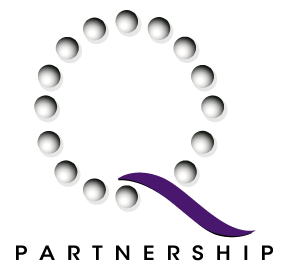It’s Spring again in the health sector and the rush is on to get fresh proposals in before the window closes. Sitting on the fringes since February 2020, watching and studying the seasonal change, the proverbial fly on a West African wall, has exposed us to intriguing mysteries[1].
West Africa has among the highest incidence and prevalence rates of HIV, TB and malaria in the world. The Ebola epidemic in West Africa killed over 11,000 people and damaged already weak health systems. GDP is 6.5 times smaller than in the Rest of Africa. Government health expenditure per capita is 3 times lower than the Rest of Africa. Out-of-pocket payments on health are proportionately 36% higher than the Rest of Africa. The region has an overall funding gap of 50% across the three diseases[2].
To secure a new round of funding in this challenging context, four mysteries have to be addressed.
Mystery 1 – Demonstrating that the previous investment made a difference
Demonstrating results is hard – public health does have advanced frameworks for measuring progress, but data quality is mixed and inconsistent. Mortality and morbidity may be falling, but are new infections, new strains? And is equal access to health improving?
The good news – a 31% reduction in Malaria deaths was recorded between 2010 and 2016 in West Africa; and a 27% reduction in AIDS deaths between 2010 and 2017. However, TB deaths increased by 5% between 2010 and 2016.
70% of countries in the region have a low utilisation of past investments – the money is available but can’t be spent. There is limited granular data available from support functions to support decision-making and Governments’ performance is often mixed.
Mystery 2 – Crafting an innovative business case for future investments
Proposal writing teams are getting better, national strategic plans more thoughtful, and investor coordination more considered, but the business case needs more work. This is particularly the case in terms of support costs – the additional dollar required to support the direct investments in disease control interventions. These may include programme management, training, supervision and data quality costs – which range in West Africa from 14-25% of the total investment.
Some countries are over-investing in formal training and under-investing in effective, onsite support. Some individuals receive multiple trainings whilst others never benefit from training at all. Travel costs are high and unit costs have increased over time, rather than the converse – in some countries they doubled between 2015 and 2019.
Mystery 3 – Eligibility for funding
Most health investors require minimum conditions for future or continuing support – clear implementation arrangements, transparent and accountable national processes, conflict-free principal recipient selection, and a sound governance structure complying with its own rules.
Stakeholder interviews revealed that governance and oversight are worse now than they have ever been, planning is disjointed andhuge inefficiencies in the management of the resources persist. These arise from poor planning and weak Human Resource data management. Perverse incentives persist. “Given the low salaries of state staff in the region, travel per diems are sometimes the only way some civil servants can make more money[3]”.
National Coordinating structures are often populated by the very same people who wish to benefit from the funding, presenting a conflict of interest challenge. While the rules of engagement are clearer, compliance is less so and documentation is often incomplete. Governments are, in some cases, failing to meet their agreed obligations.
Mystery 4 – The COVID-19 disrupting the rhythm
The COVID-19 pandemic is having a serious impact on the most vulnerable communities worldwide and threatens progress on HIV, TB, malaria, vaccination, and other areas of health. Results from the Global Fund’s latest biweekly survey show challenges for HIV prevention and HIV, TB and malaria case finding. In addition, the Global Fund is seeing cancelled or delayed prevention activities and laboratory staff being reassigned to COVID-19 – 20% of HIV and TB lab services are experiencing high or very high disruptions.
10% of HIV, 9% of TB and 6% of malaria programmes report shortages of key medical supplies and treatment.[4] Imperial College London estimates “in high burden settings, HIV, TB and malaria related deaths over 5 years may be increased by up to 10%, 20% and 36%, respectively, compared to if there were no COVID-19 epidemic.”
The message in the mysterious bottle
The message to investors – request accurate impact evidence, particularly as it applies to unit costs of programmatic and support costs. Insist countries continue to sharpen the governance oversight role, the quality of strategic decision making and the management of conflicts and non-compliance. Manage Government commitment and performance more firmly (or invest more through non-government sources) and ensure that national level planning does not allow Covid-19 to disrupt the bigger health threats.
[1] Based on Q Partnership reports – Global Fund supported studies into Malaria Cost Optimisation and Eligibility and evolution in Ghana in particular (and West Africa in general) February to July 2020. The studies included the review of plans, budgets, actual expenditures, governance documentation and interviews with a wide range of stakeholders involved in the 3 diseases in Benin, Burkina Faso, Guinea, Ghana, Mali, Nigeria,
[2] https://www.theglobalfund.org/media/8493/oig_gf-oig-19-013_report_en.pdf
[3] Uses and Abuses of Per-diems in Africa: A Political Economy of Travel Allowances, AfDB, 2014
[4] https://www.theglobalfight.org/covid-aids-tb-malaria/






